Although unbeknown to most, Belgium’s third-largest city was actually once one of the largest and most important cities in Europe, and its medieval centre is beautifully preserved to this day. For this reason, Gent attracts many tourists year-round, which is fully understandable. Visiting Gent is like stepping into a real-life fairytale.
For our Easter holiday this year, my boyfriend and I had planned a nine-day journey around North France, Belgium and West Germany but due to a bit of corona mess, we had to cut the trip short, cutting out North France and Bruges as well as two of our three planned days in Gent. We were left with just one night and a morning to explore the city! Nowhere near enough, but still good enough to give us an impression of the city. We could tell even from our evening walk from the bus station to the city centre that we were in for a treat!
Thankfully, my boyfriend’s sister and her friend were able to take over our original tickets and accommodation in Gent, and they had a great time exploring the city. We arrived in the late evening to their hostel, Hostel Uppelink, which is one of the most beautifully located hostels I’ve seen. They had a view of the medieval heart of Gent from their rooms! We enjoyed dinner together in the hostel, and then my boyfriend and I headed to our hotel, Monasterium PoortAckere, which is located inside an old monastery. I’ve never slept in a monastery before, and it was both haunting and a beautiful experience. We woke up to a gorgeous view of the chapel!

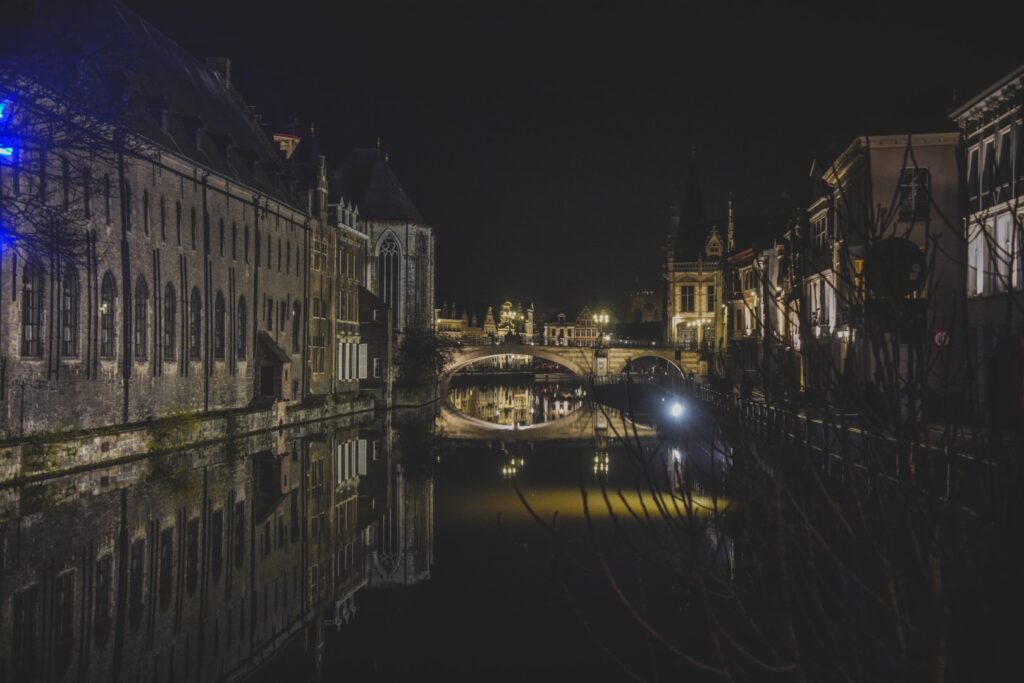
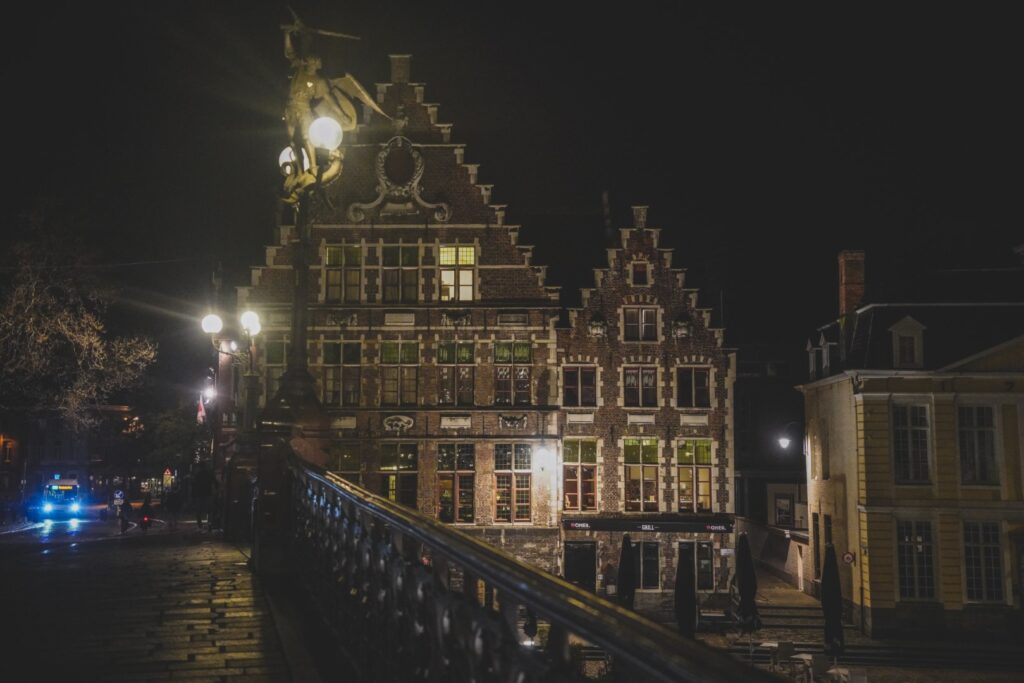
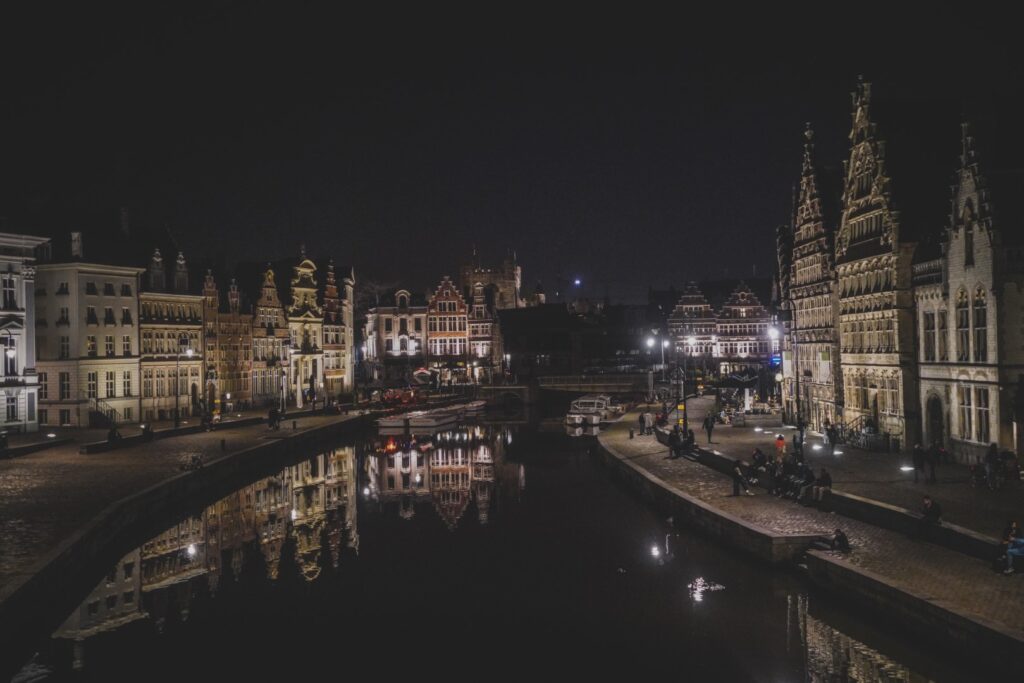
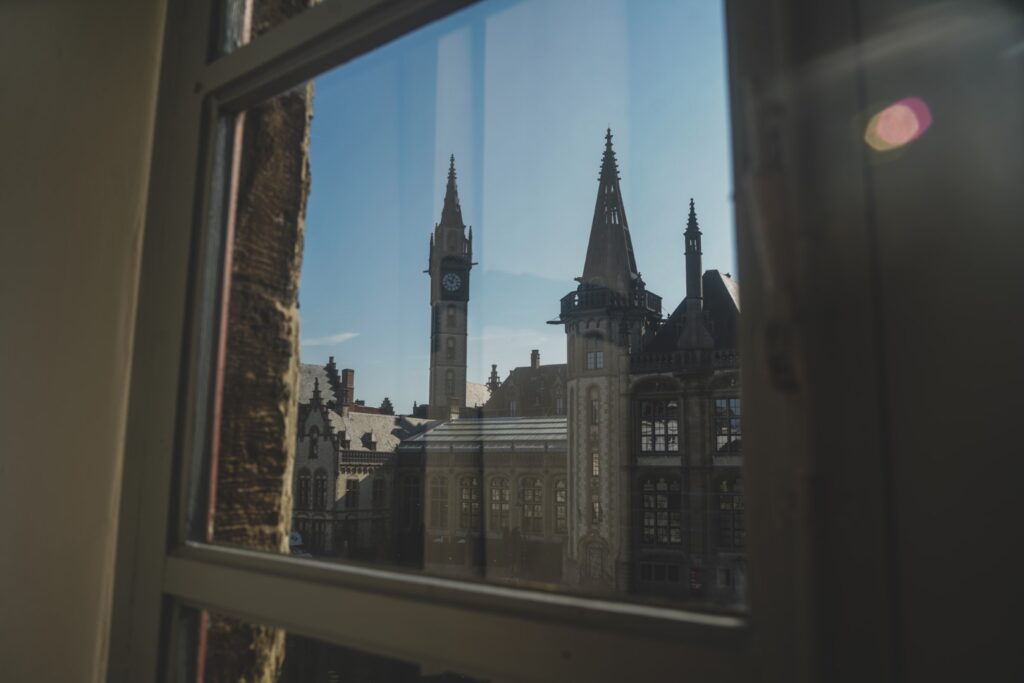
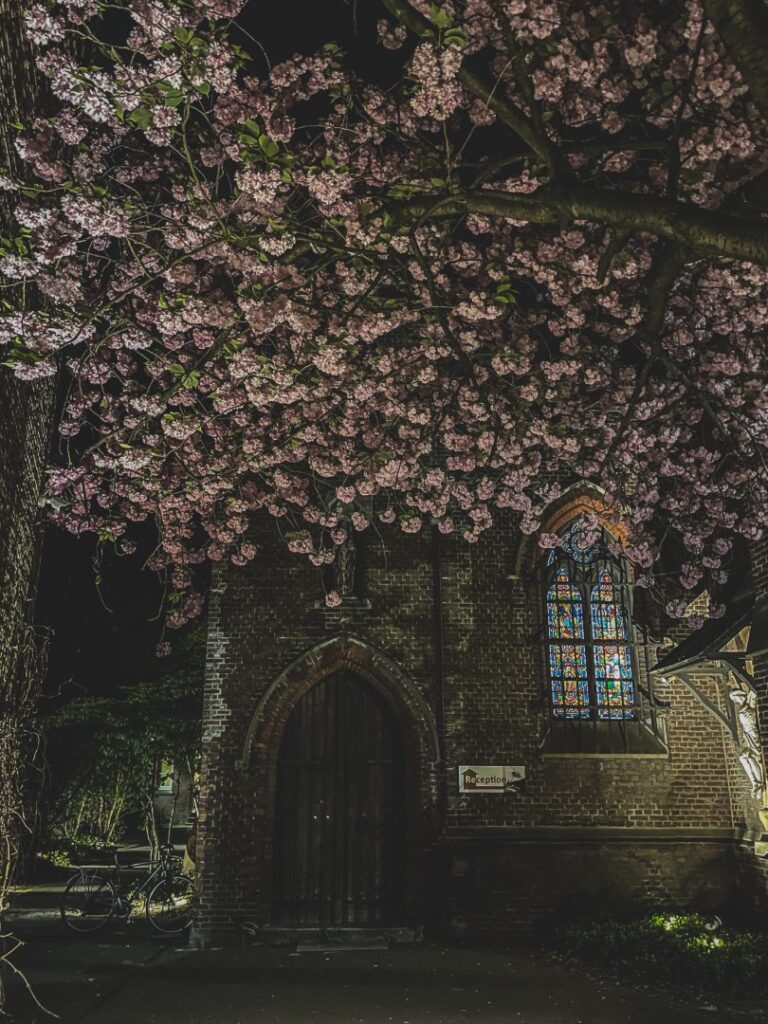
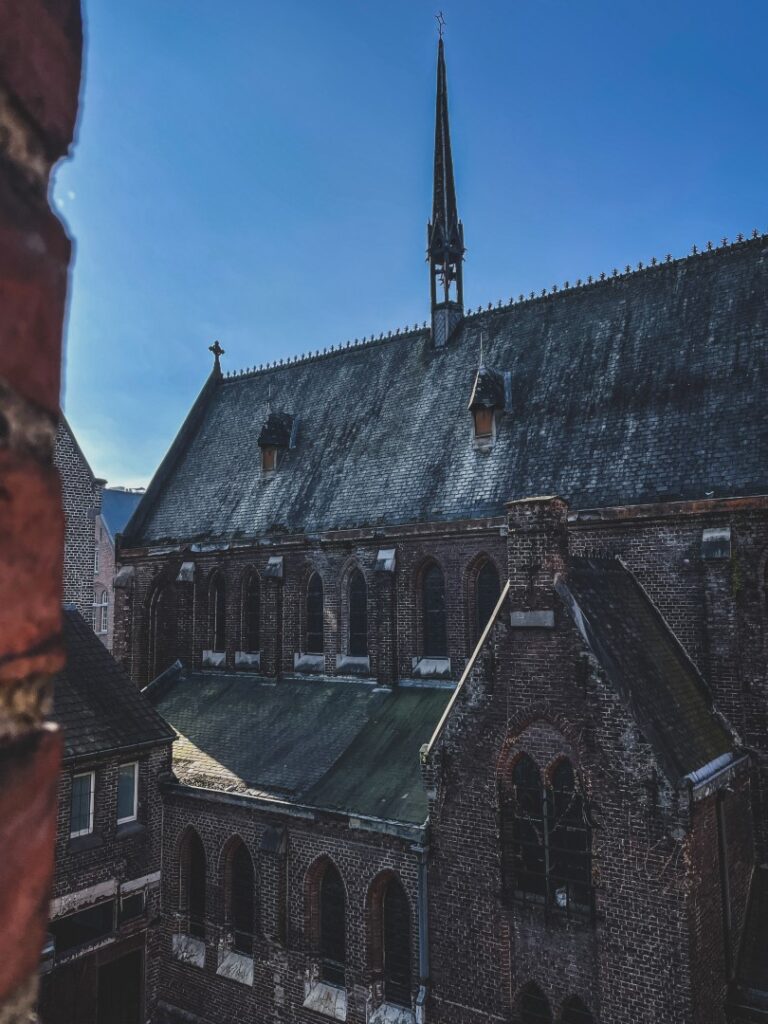
We rose early the next morning to get as much out of our half day in Gent as possible. After a quick breakfast at the beautiful hostel, we set out and immediately found ourselves on St Michael’s Bridge, which is renowned for having the most beautiful viewpoint in the city. Apparently, it’s the only place where you can see all medieval towers of Gent at once: the towers of St Nicholas’ Church and St Bavo’s Cathedral as well as the famous Belfry of Gent.
I was immediately in awe when we reached the spot. The rest of the day was a bit like that. Turning a corner, jaw dropping, stars in my eyes. Repeat.

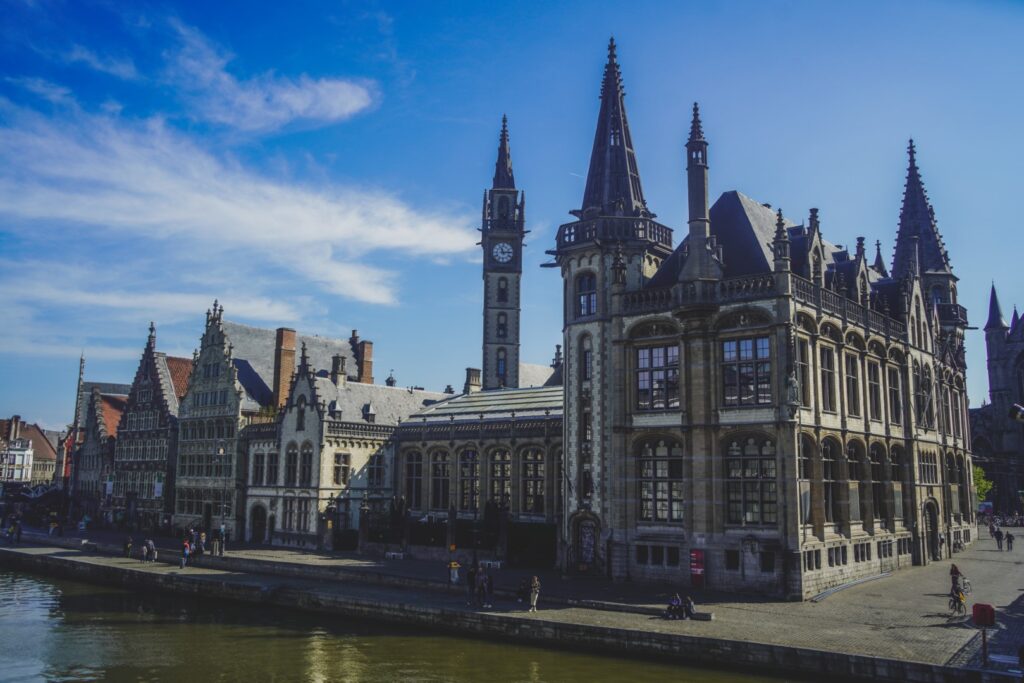



Before diving into medieval Gent, we took a step into a colourful world of modern art, along Werregarenstraatje. The narrow cobbled alleyway is covered with street art created by local artists. Walking through is like visiting an art museum, only it’s free and you’re outside!
There’s actually quite a lot of street art to be found around Gent, but this street is by far the most famous. Anything is allowed here, and apparently, the street art changes from day to day, depending on the artists’ moods.
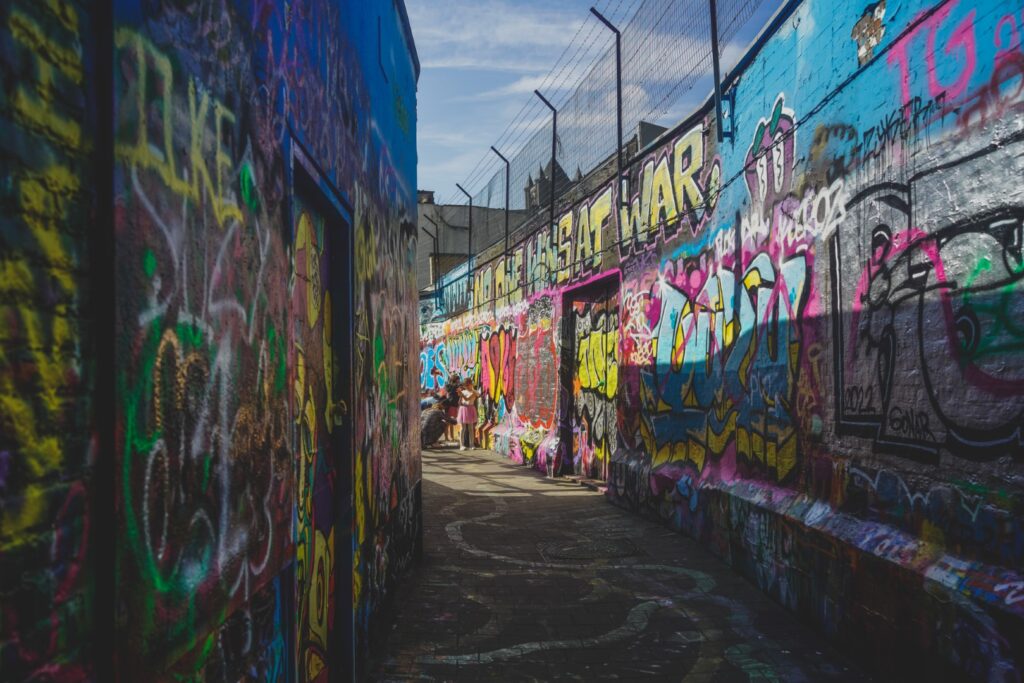

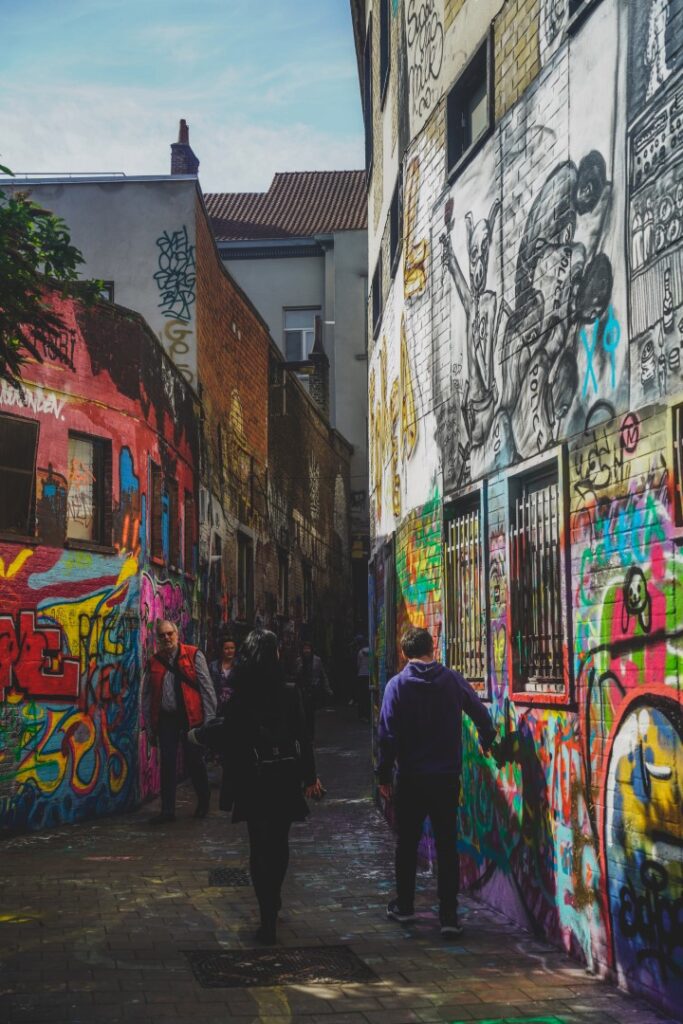

Gent’s history dates back to prehistoric times, but it wasn’t until the 11th century that the city became an important trade centre due to local production of cloth made from imported British wool. During this time, Gravensteen Castle was constructed. It was built in 1180 on the site of a former castle that had burned down four years earlier. The new castle served as the residence of the Count of Flanders until 1353 when it was abandoned in favor of Prinsenhof of which only a gate exists today.
In later years, Gravensteen Castle was used for several different purposes, including a prison and a cotton factory. Today, it’s a museum and one of the most visited landmarks of the city. However, with an entrance fee of 12 euros, we decided to admire it from the outside. Had we had more time, we would’ve loved to visit, not least to see the view of the city from the castle rooftop.
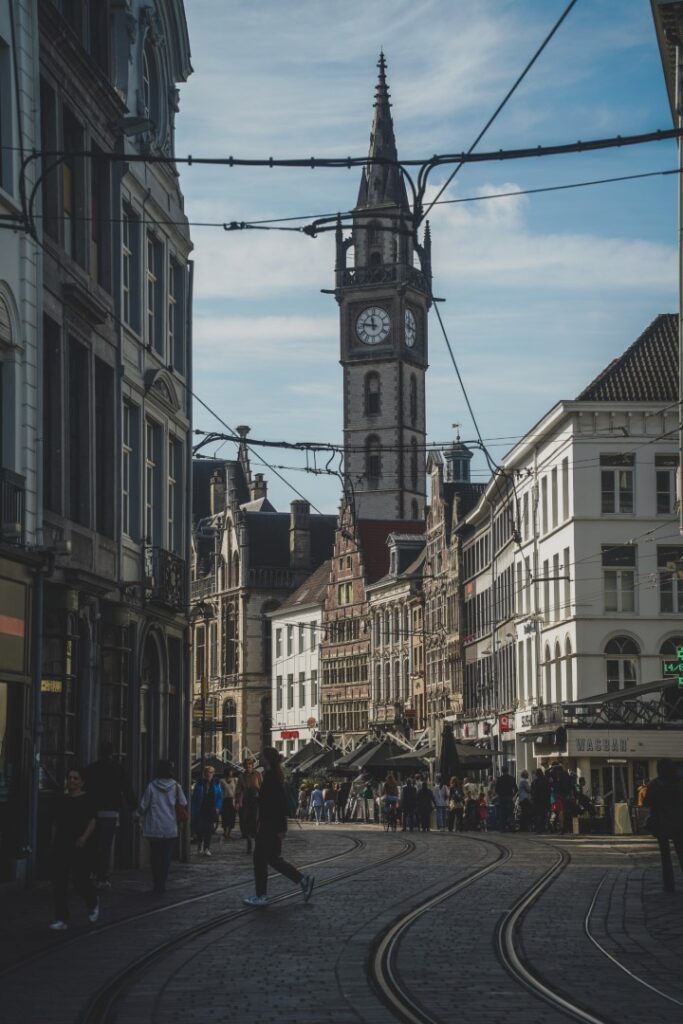
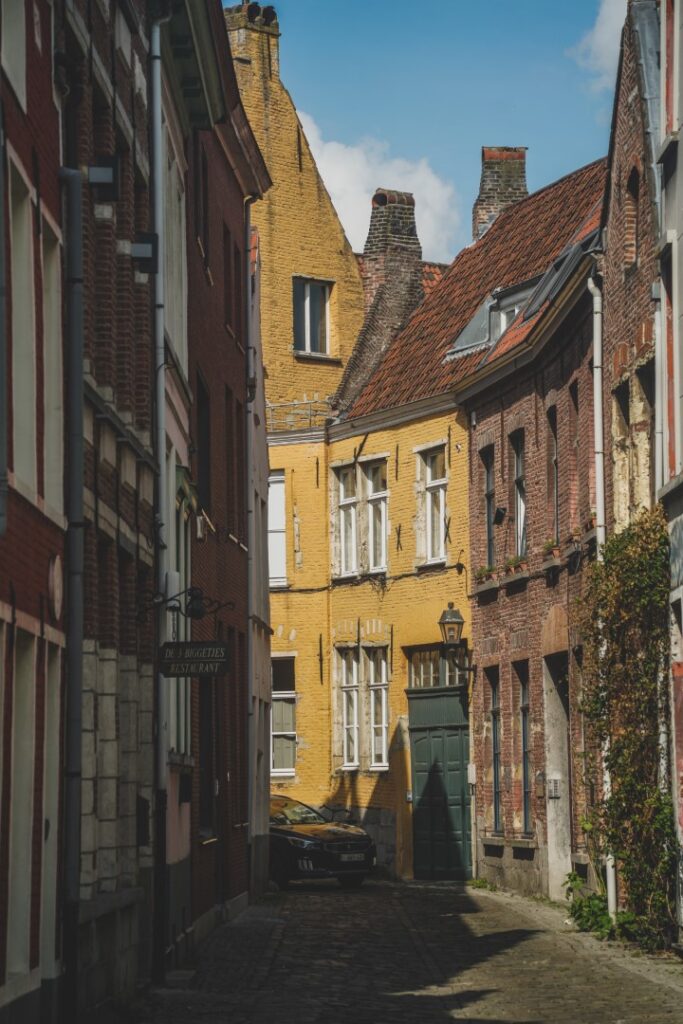

The heart of Gent is its main square, Vrijdagmarkt, located in the middle of the historic city. The name of the square means ‘Friday Market’ and refers to the age-old morning market that has been held on the square every Friday since 1199!
Surrounding the square are historic buildings that house a vast array of bars, cafés and restaurants. Since my boyfriend is a beer enthusiast (and especially Belgium beers), I’d researched ahead for the best bar in Gent, and I found it right on the square. At De Dulle Griet, they have over 500 different Belgian beers to choose from – the largest collection in the city!
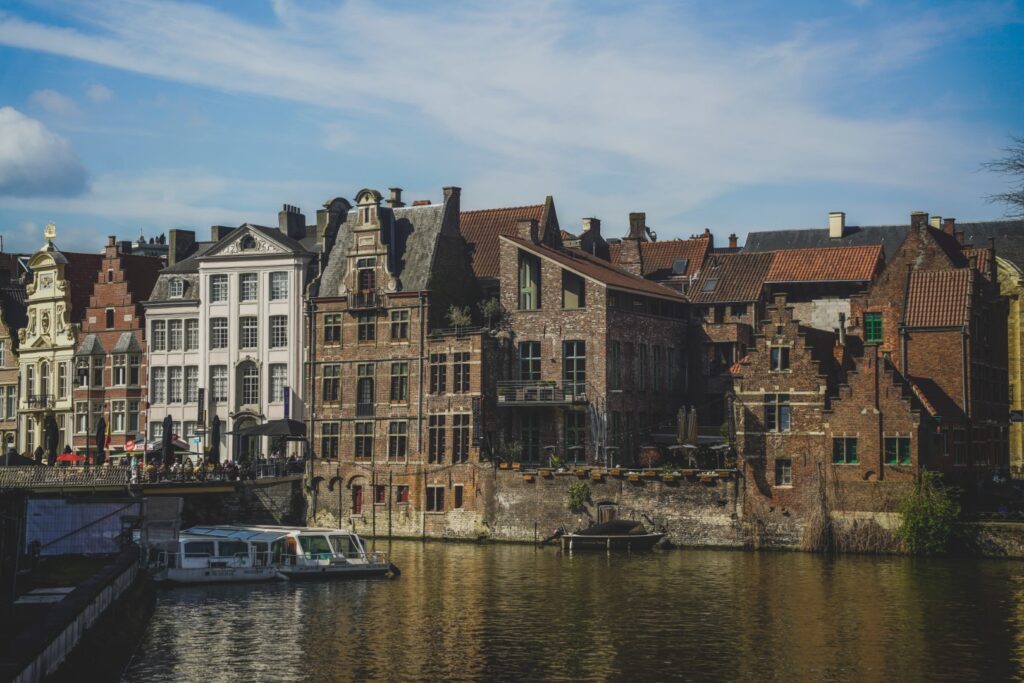
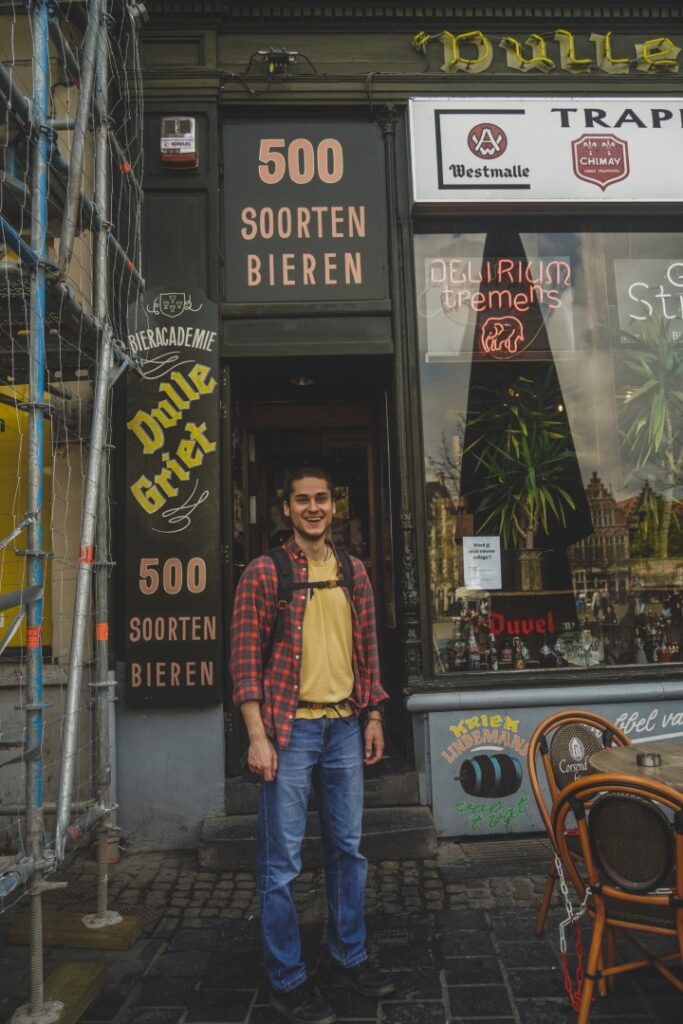

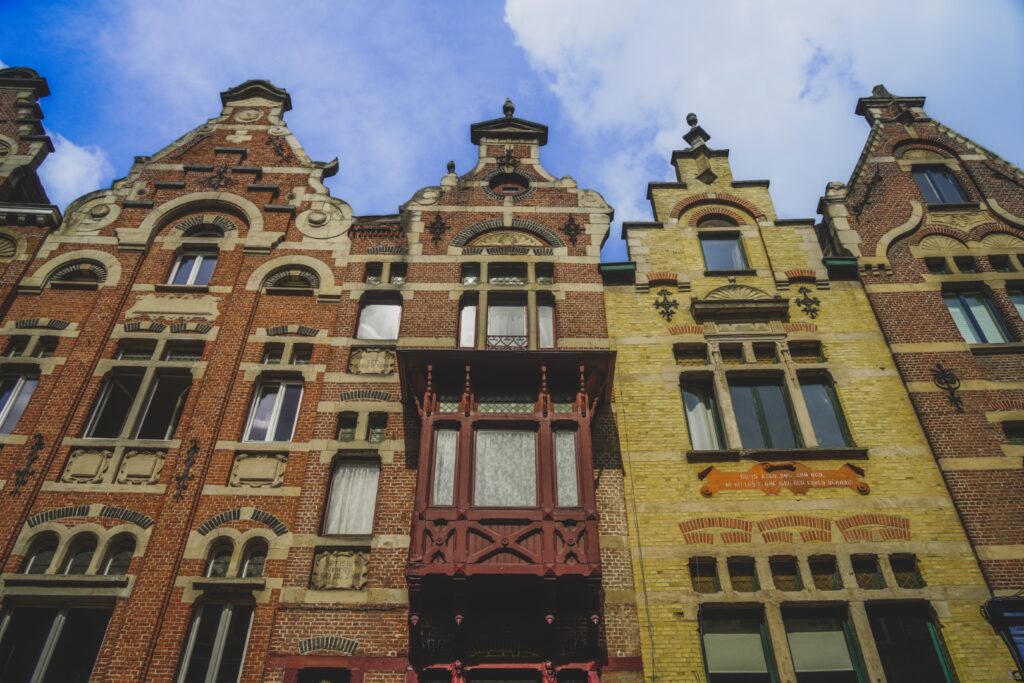
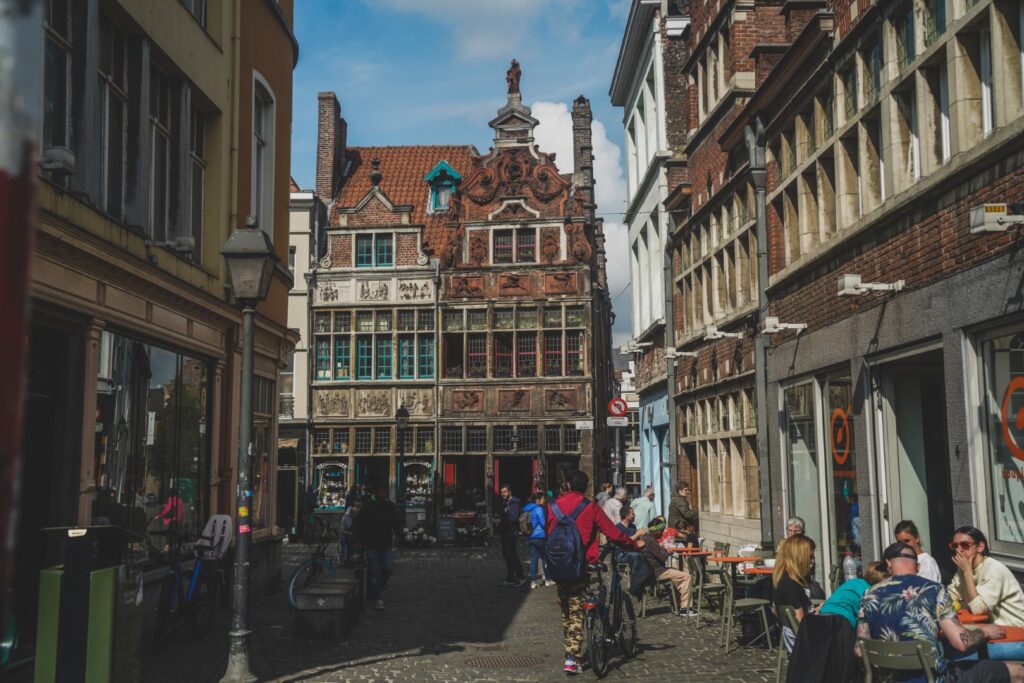
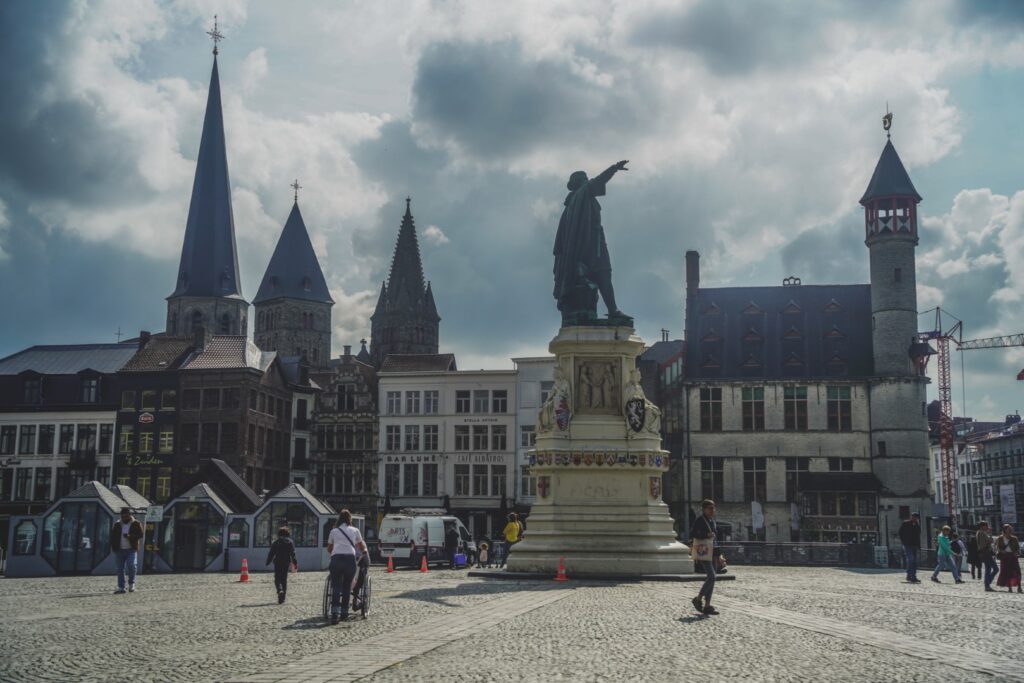
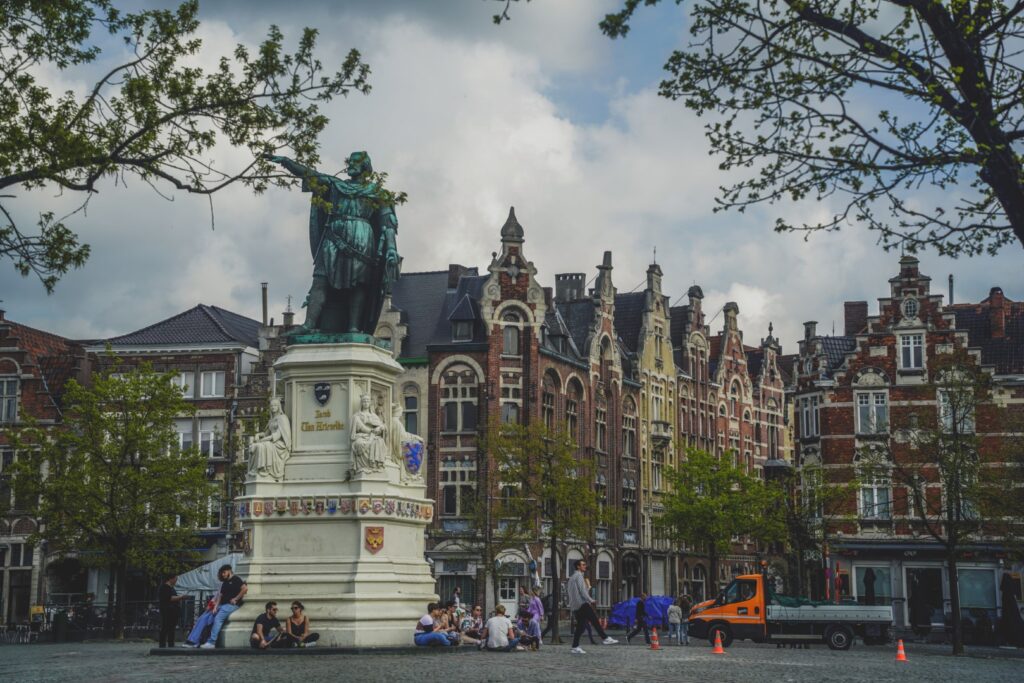
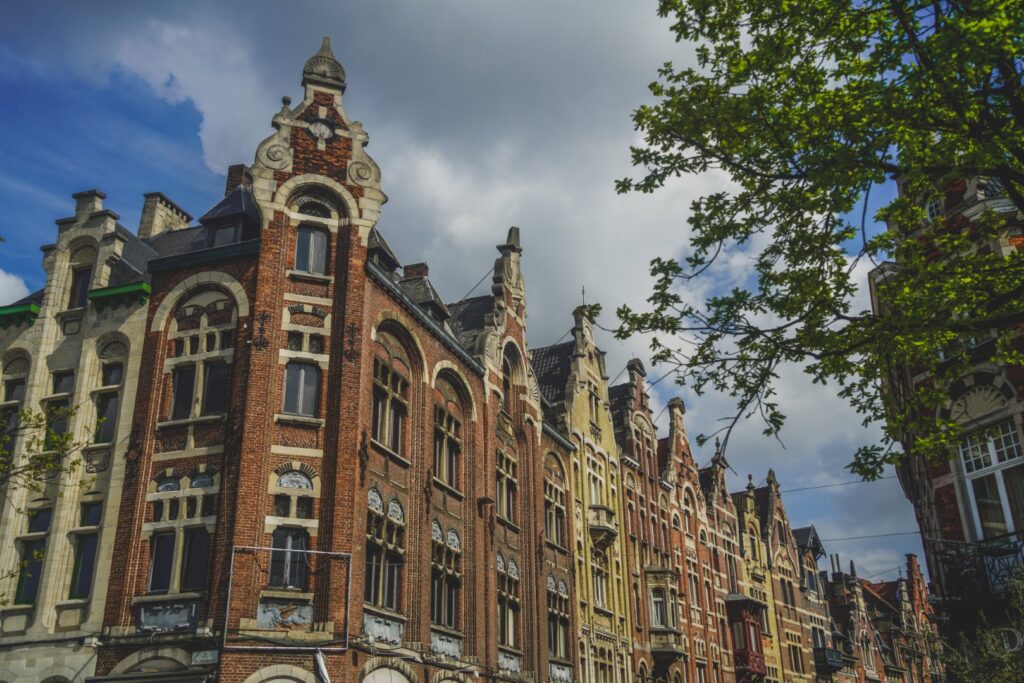
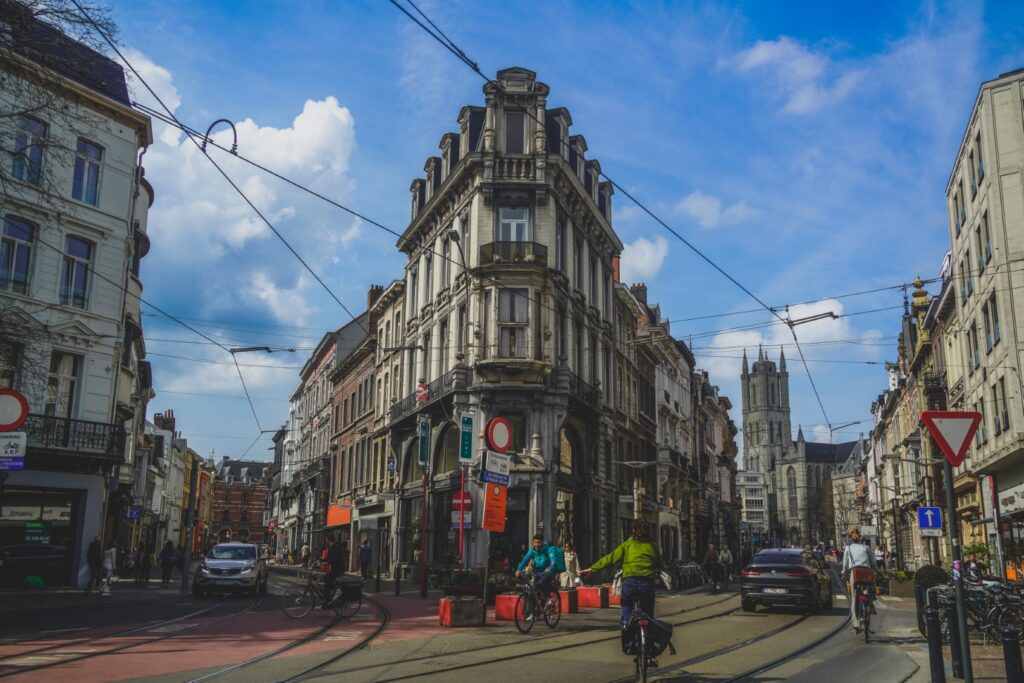
After spending a few hours exploring the centre of Gent, we decided to venture outside the centre for a while, first to explore the ruins of St Bavo’s Abbey.
The history of the abbey dates back to the 7th century when it was founded by Saint Amand in an attempt to convert the locals to Christianity. The abbey was raided twice in the 9th century by Vikings, after which it was abandoned. However, the monks returned some 50 years later and the abbey and its associated church grew into an important place of worship.
Unfortunately, much of the abbey was destroyed by Emperor Charles V during the Revolt of Gent in 1539 in revenge for the Gent uprising, and today, just the ruins are left to explore. The part of the church that still stands today is said to be the oldest wall in Gent.
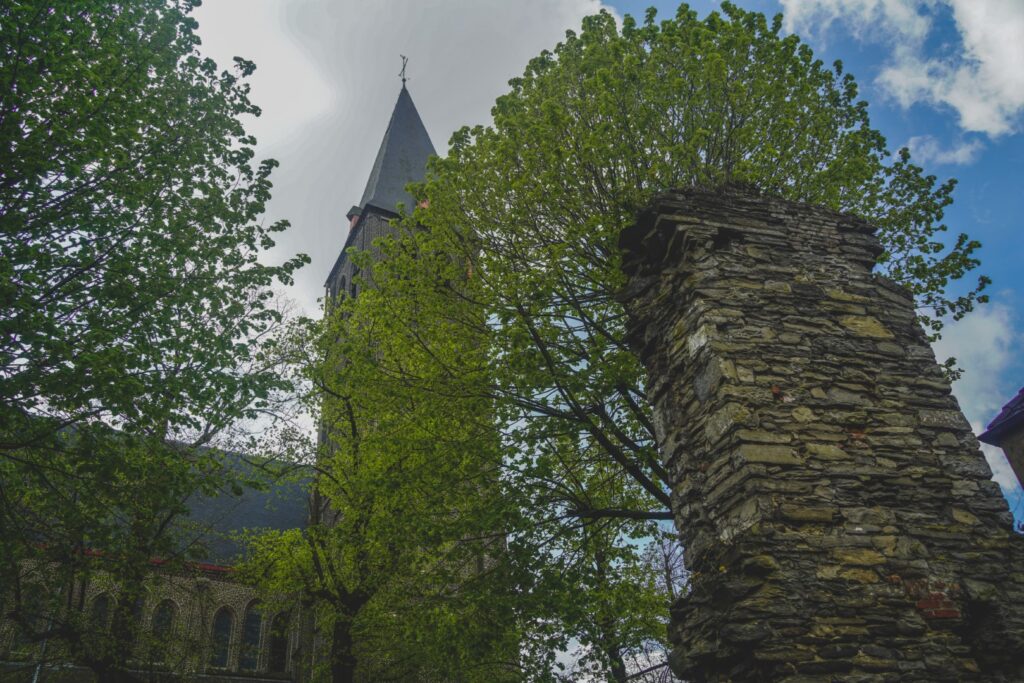


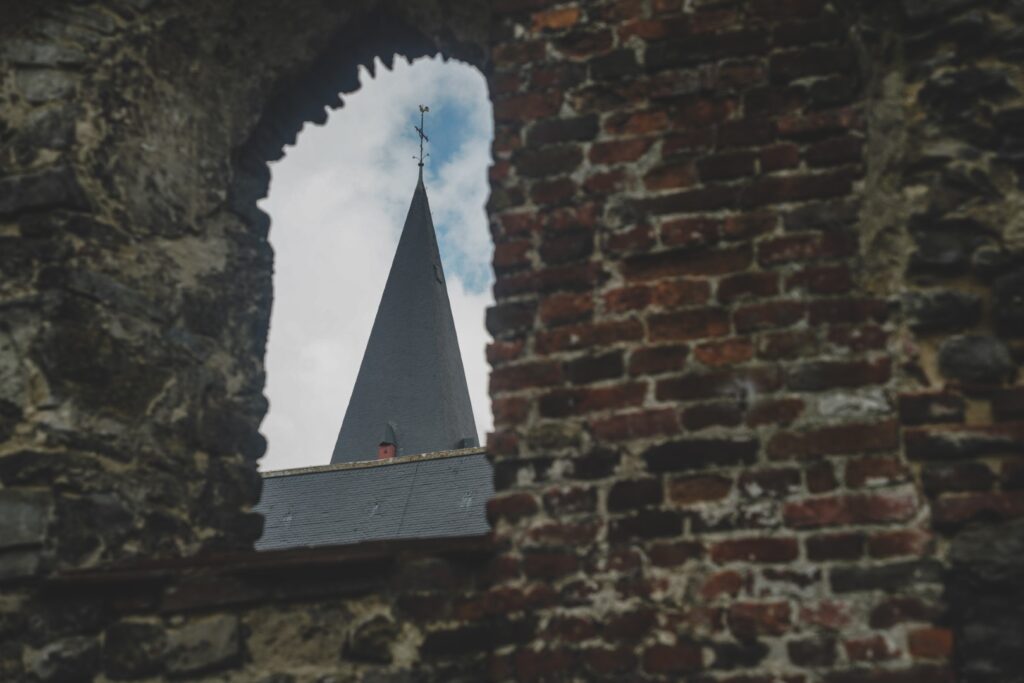
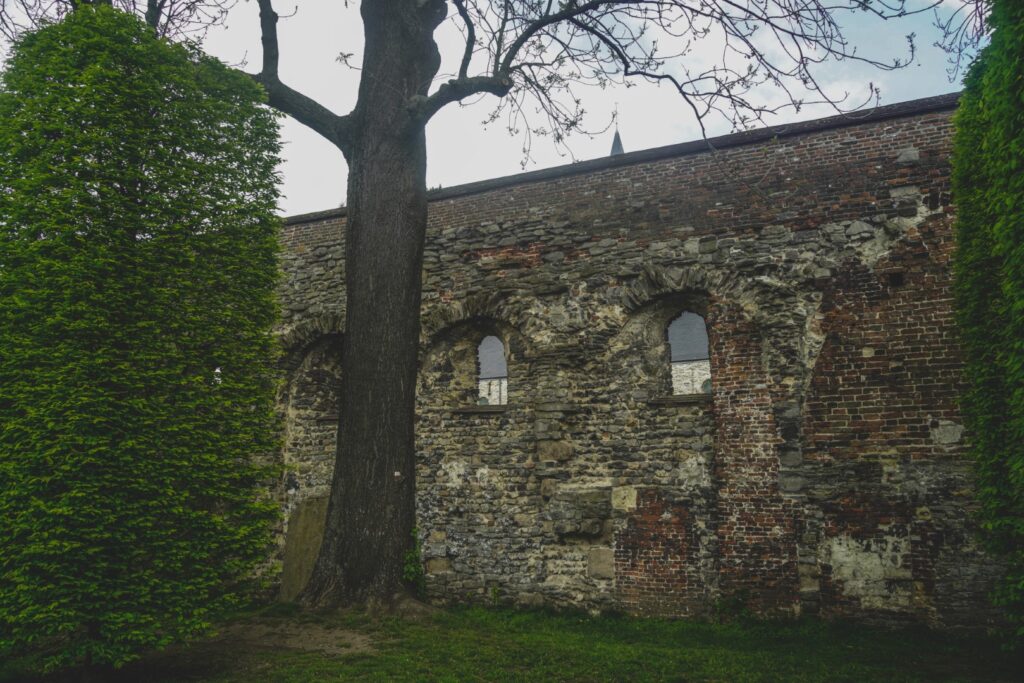
It’s no secret that Gent’s historic Belfry tower is a UNESCO site, but did you know that the city holds two other UNESCO sites too? They’re relatively unknown and located outside of the typical tourist routes. Honestly, had it not been for my obsession with visiting UNESCO sites, I don’t think I ever would’ve found them.
I’m talking about the two beguinages, the Great St Elizabeth Beguinage and the Small Beguinage of Our Lady ter Hoyen. Beguinages are architectural complexes that were built during the 13th century to house beguines, who were part of a spiritual revival movement and lived in imitation of Jesus’ life through voluntary poverty, caring for the sick and religious devotion. The last beguine of Gent died in 2008 shortly before her 100th birthday.
The Small Beguinage is the best preserved of the two, and this was the one we chose to visit. It dates back to 1235 when it was founded by the Countess of Flanders, but has been renovated many times since. The buildings that stand today date mostly to the 17th and 18th centuries. Today, the complex is used as normal homes for locals, but it’s still possible to visit and walk around the grounds. I can’t imagine a more interesting place to live!
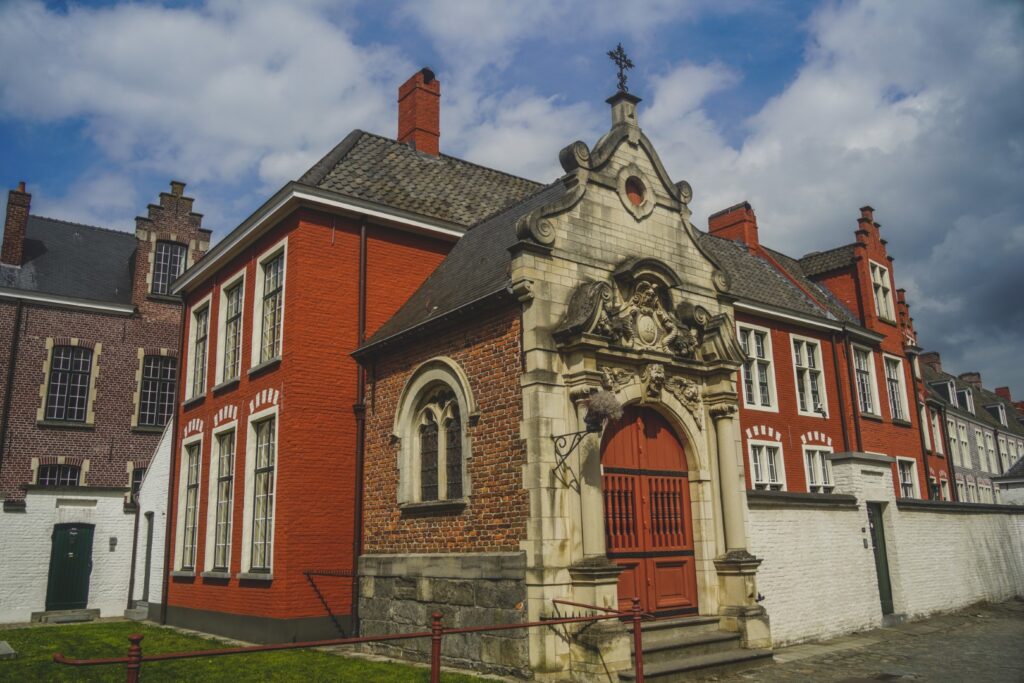
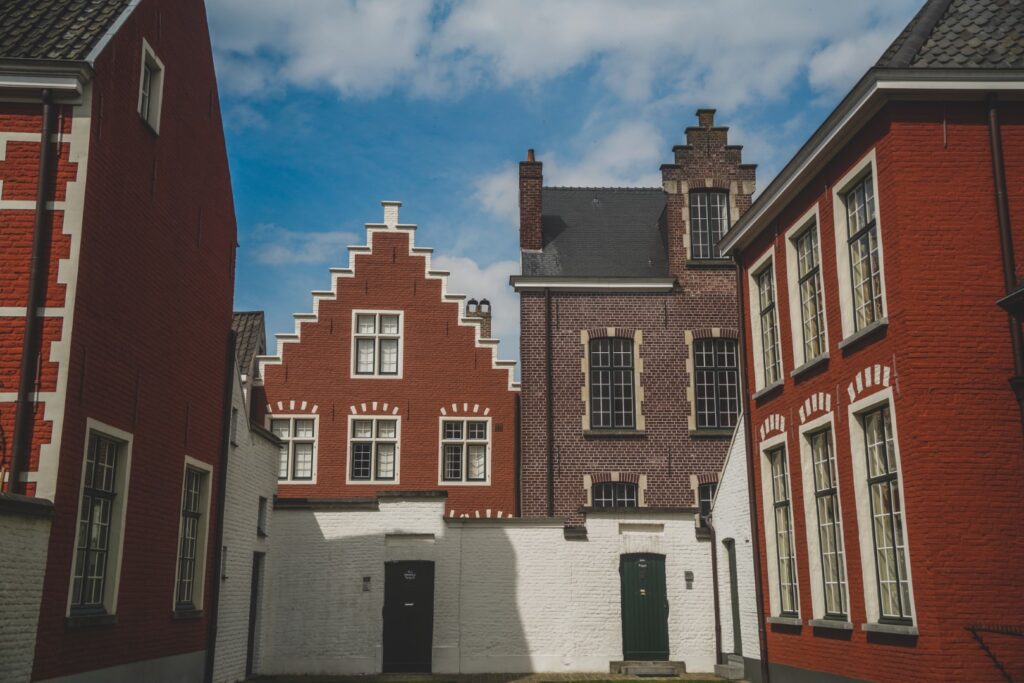

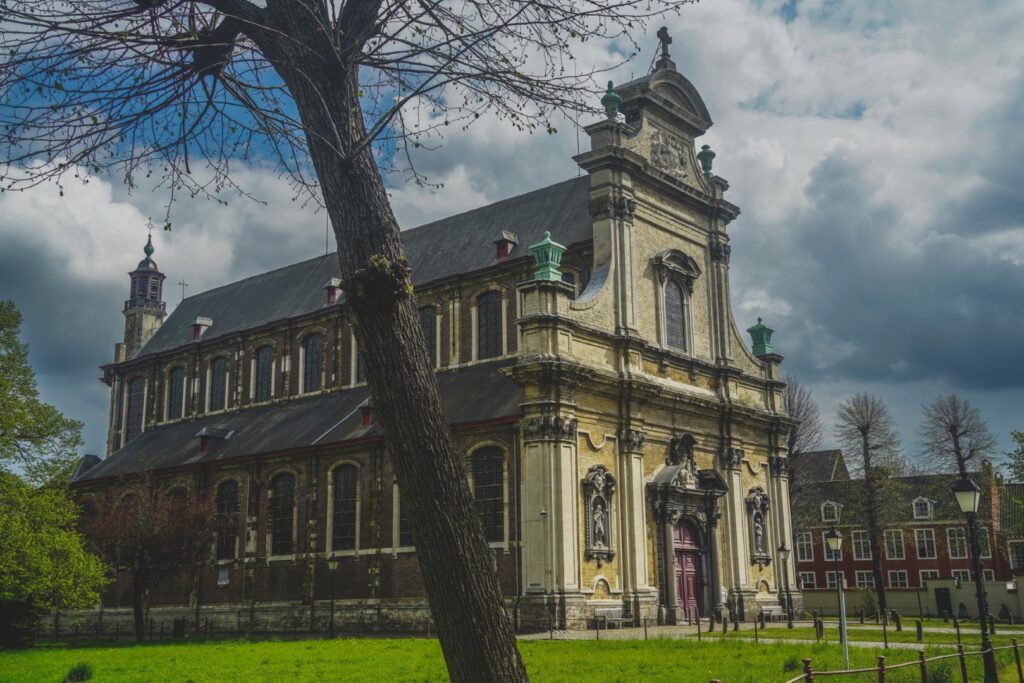
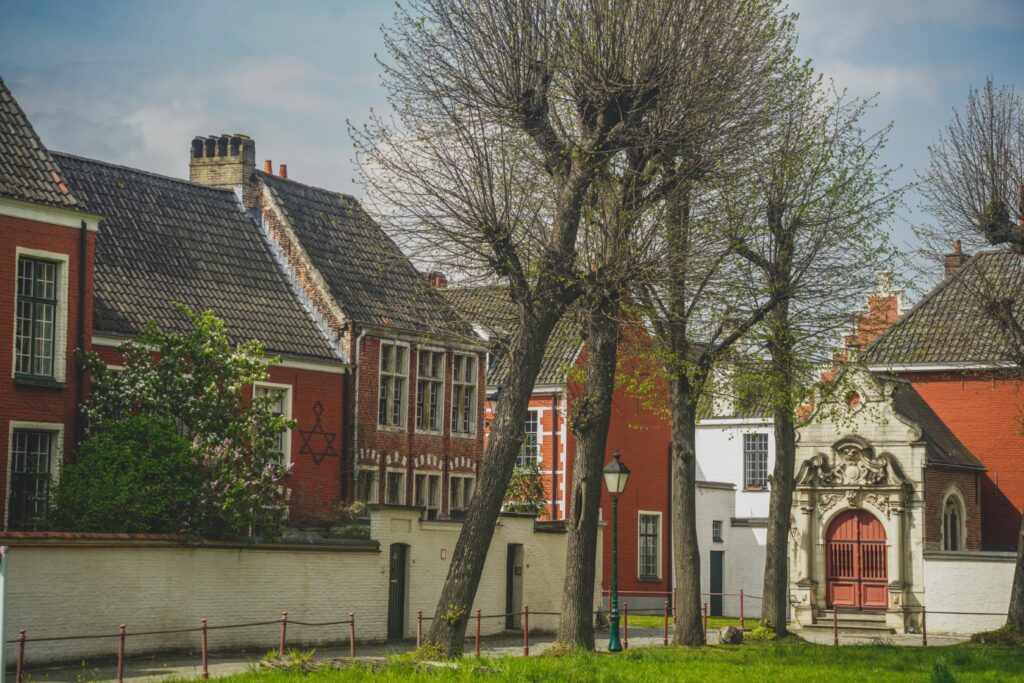
Back in the city centre, it was finally time to explore the two most famous sights of Gent. We started with Saint Bavo’s Cathedral, built around 1274. The gothic structure is a prominent landmark on Gent’s skyline, but it’s perhaps even more impressive inside.
The main draw to the cathedral is the Gent Altarpiece which is considered a masterpiece of European arts, and which marked the transition from the Medieval times to the Renaissance. The cathedral is free to visit, but unfortunately, the altarpiece is locked away in a separate room requiring a fee of €12.50 and a reserved time slot. We decided to skip it as we’re not really art people.
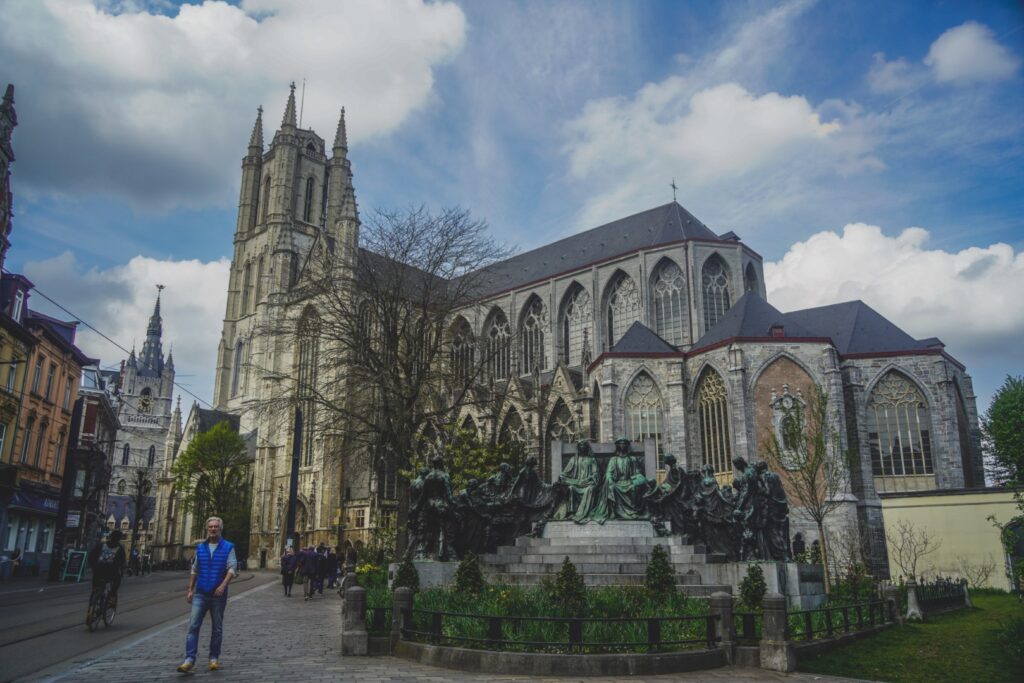
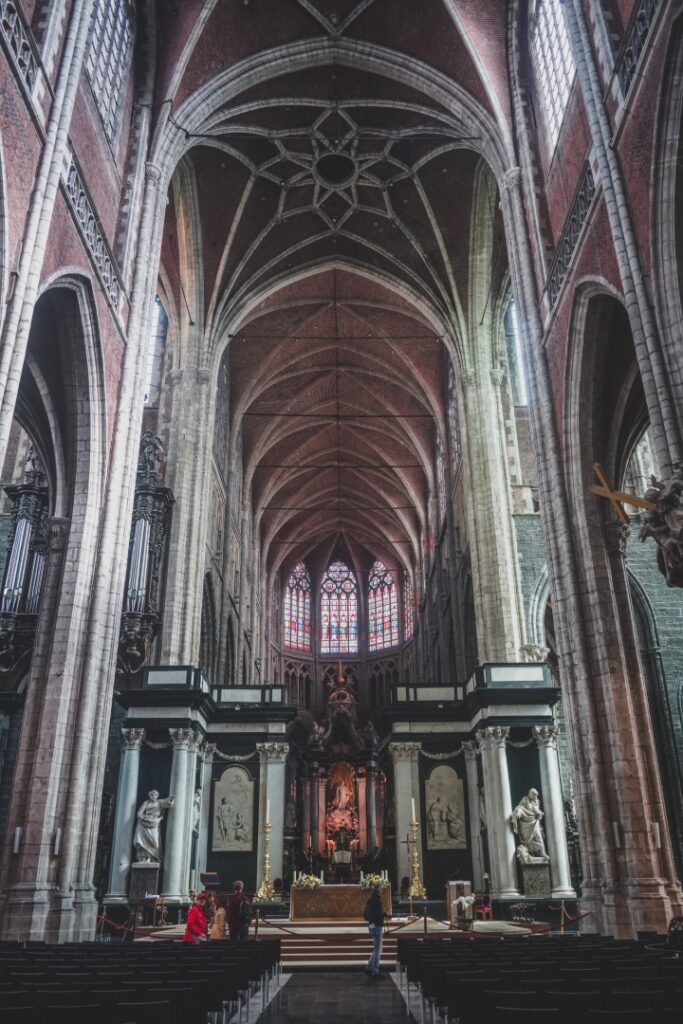
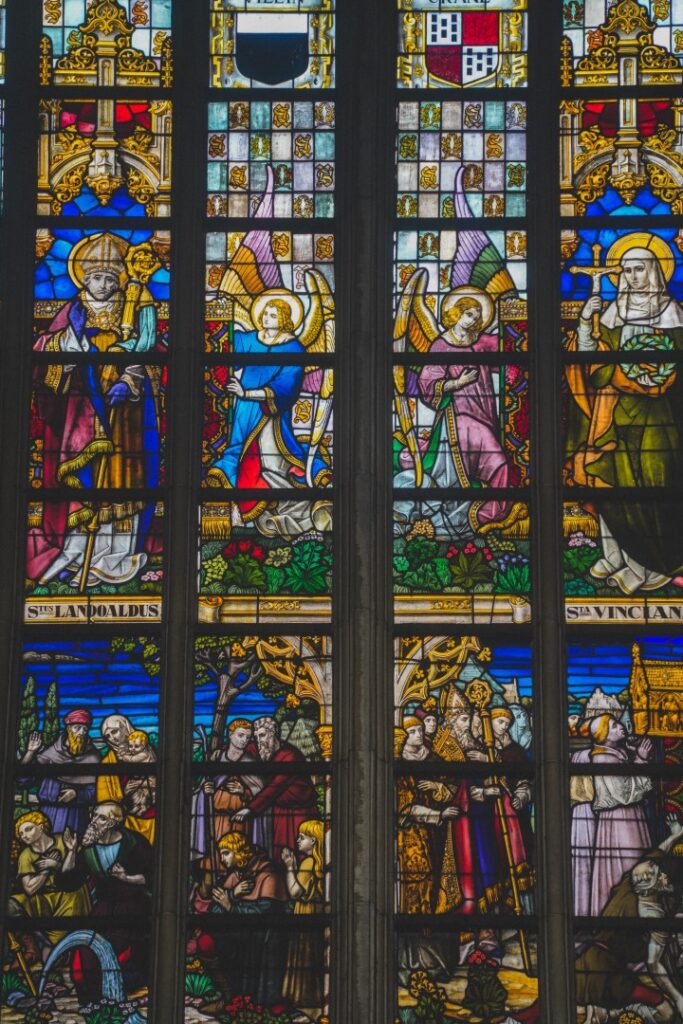
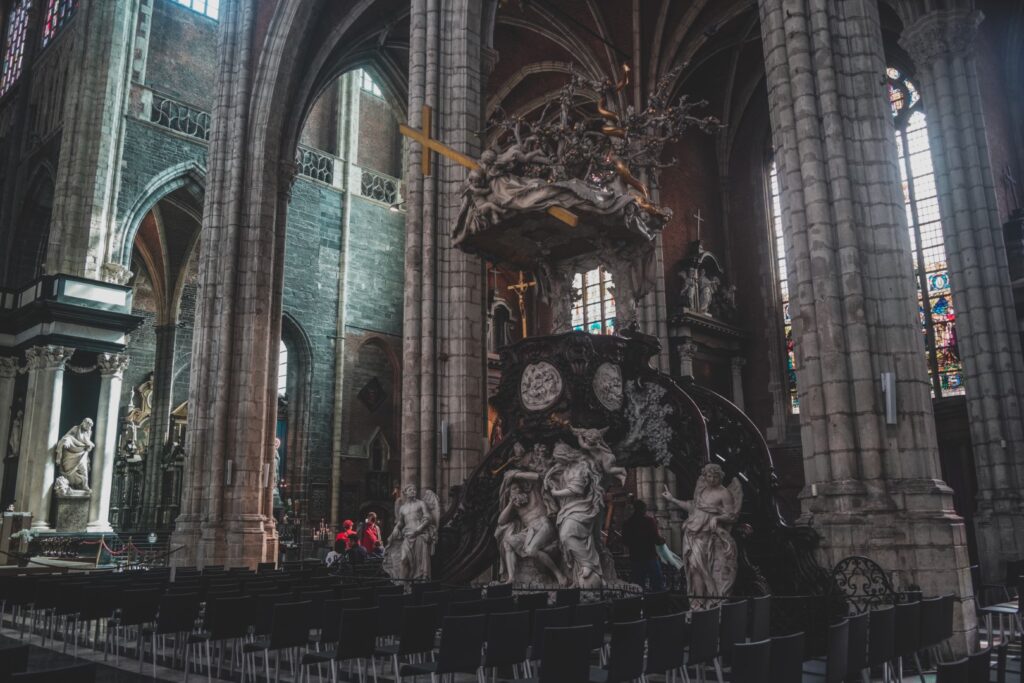
We saved the very best till last – the view over Gent from the Belfry tower, a UNESCO World Heritage site. Built between 1313 and 1380, the belfry served as a bell tower to announce not only the time but also various warnings, and it also served as a fortified watchtower and keeper of the most important city documents.
At 91 metres, it’s the tallest belfry in Belgium, and it makes for a wonderful view over the entire city. I’m glad we kept this gem of place for the end of our visit so we could say goodbye to Gent with a bang!


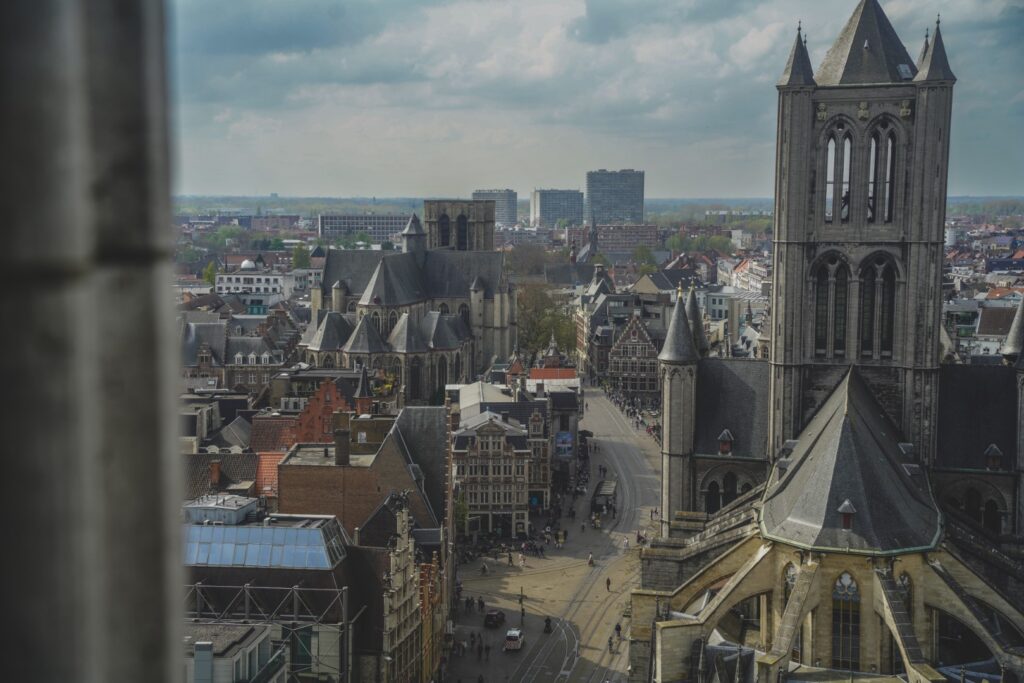
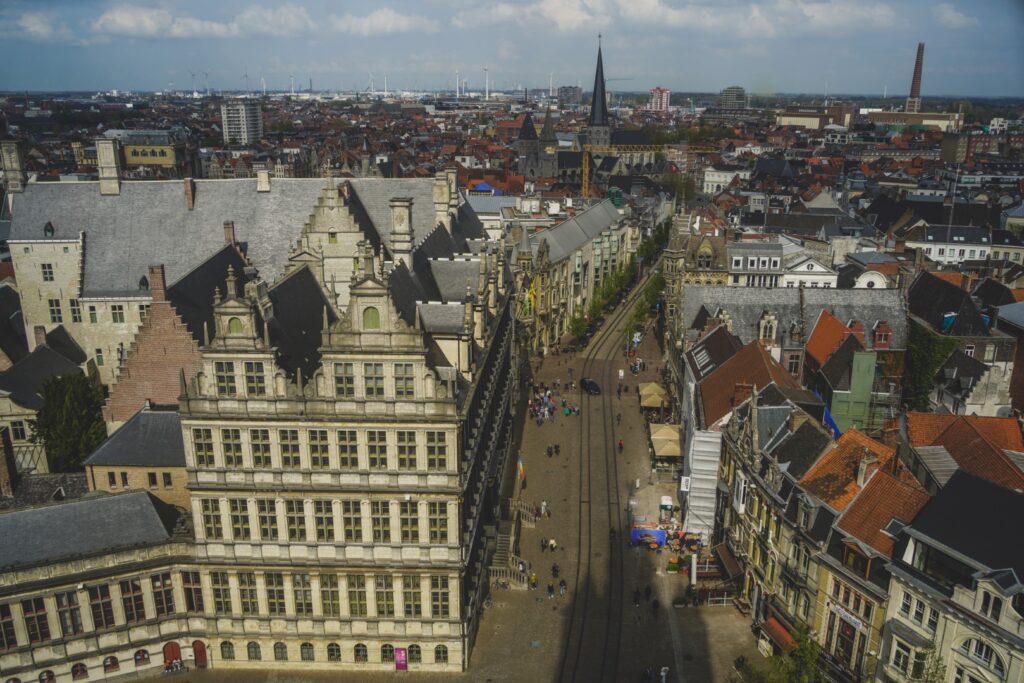
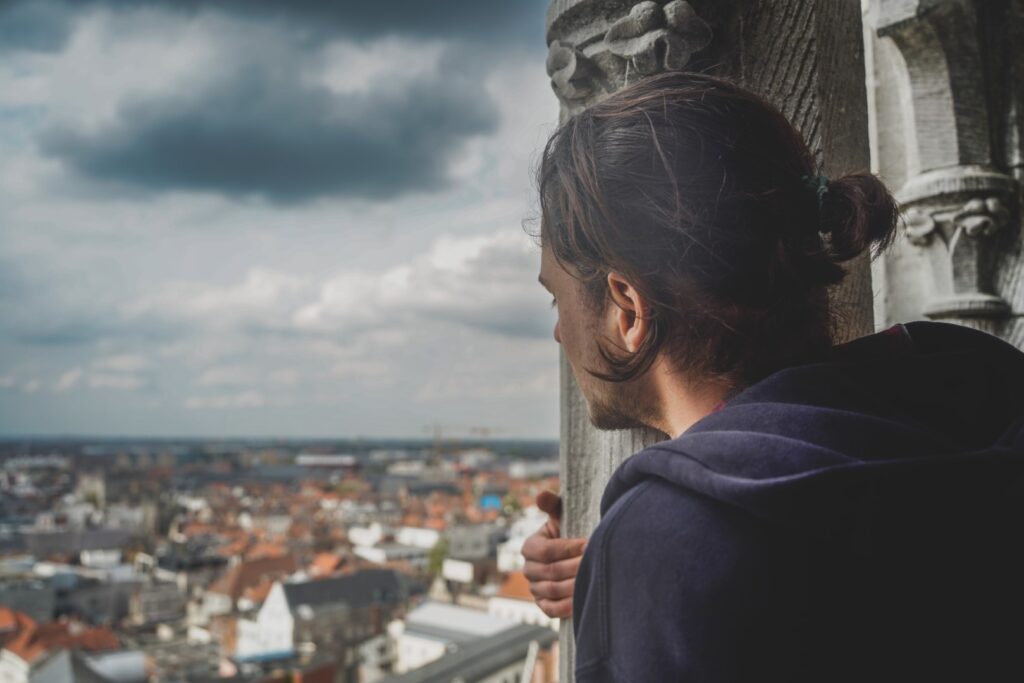

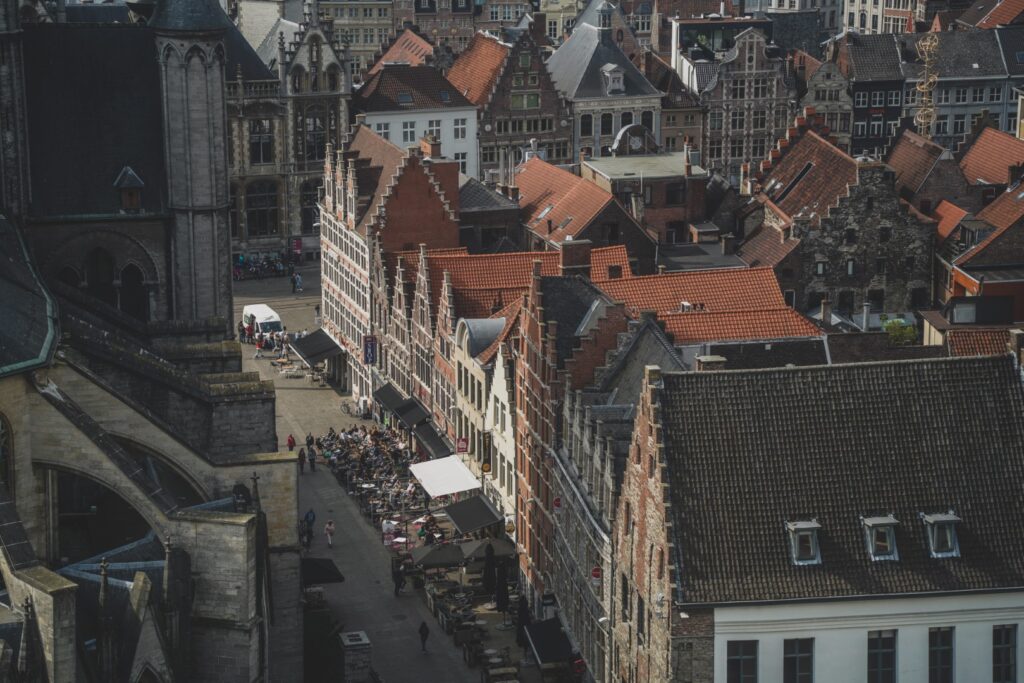
There’s a lot more to see and do in Gent, and we could definitely have used those extra days, but I’m happy that we got to explore so much during our short time in the city.
If I do return one day, I’d love to go on a canal cruise or go kayaking on the canals. I’m sure the views from the water are mesmerizing!
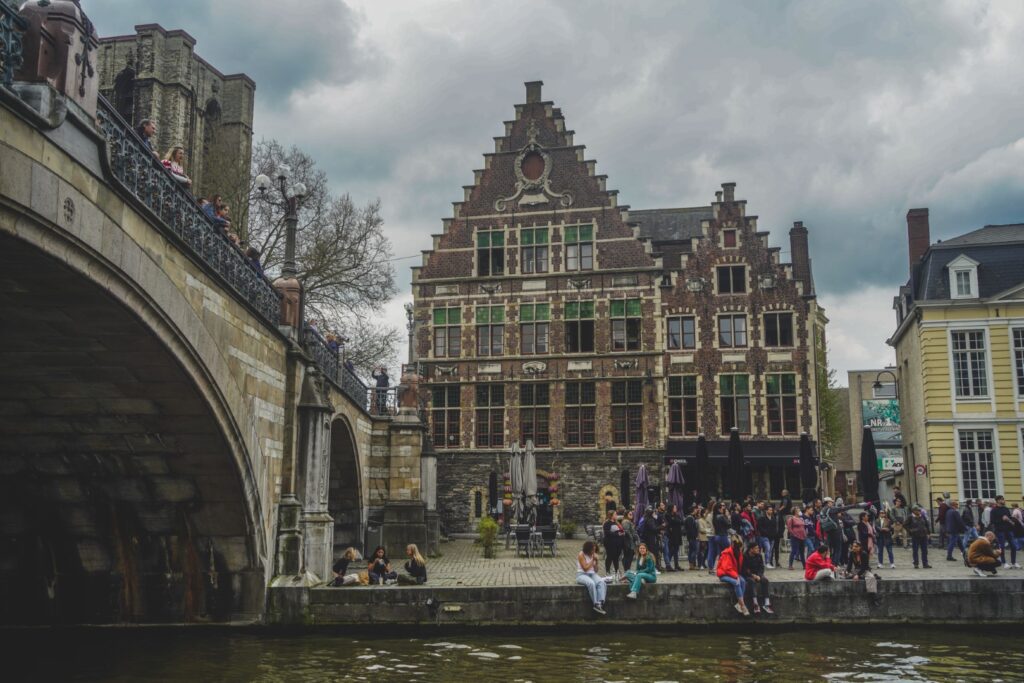
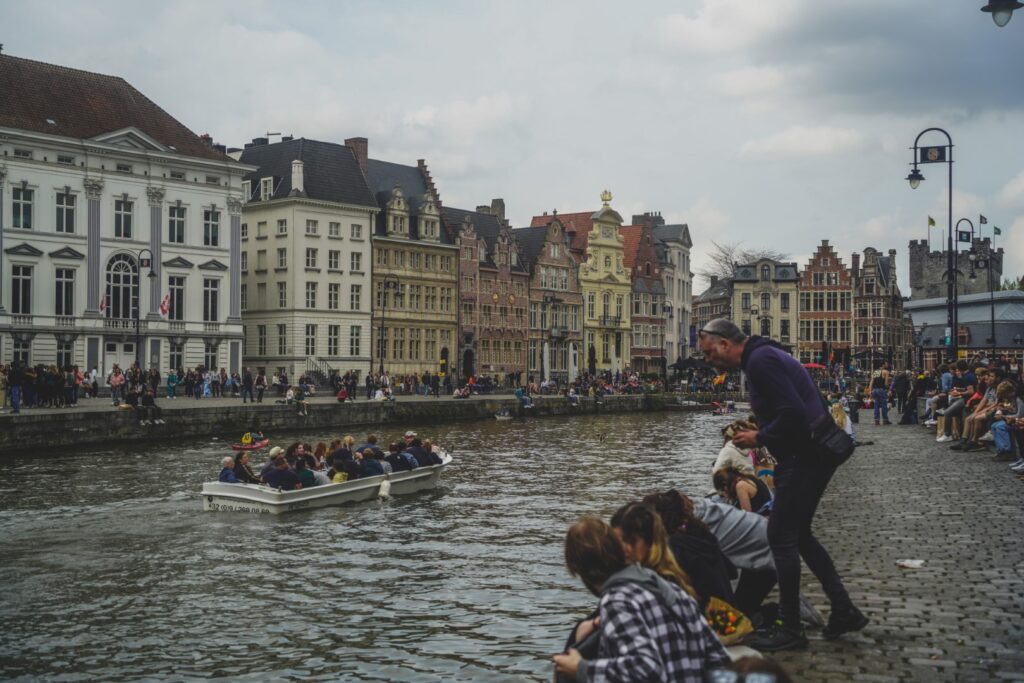

Gent was my first true destination in Belgium, and what a wonderful first impression that was.
Before this trip, I’d only driven through Belgium. I felt a bit guilty for including the country in my count because I’d technically been there, but I’d never seen anything worth remembering. Never experienced anything truly Belgian. Never tried Belgium waffles (I know, it’s a scandal!). I was really happy to finally visit Belgium properly. And Gent only made me hungry for more. More of Gent and more of Belgium! Thankfully, our trip included two more beautiful Belgian destinations – stay tuned!
WANT MORE INFO?: Download a city guide for Gent with GPSmyCity here!
Leave a Comment
Pingback: A weekend in Brussels: How I unexpectedly came to appreciate Belgium’s diverse capital – Northtrotter on 16/10/2022
Pingback: My travel year of 2022 – Northtrotter on 16/10/2022

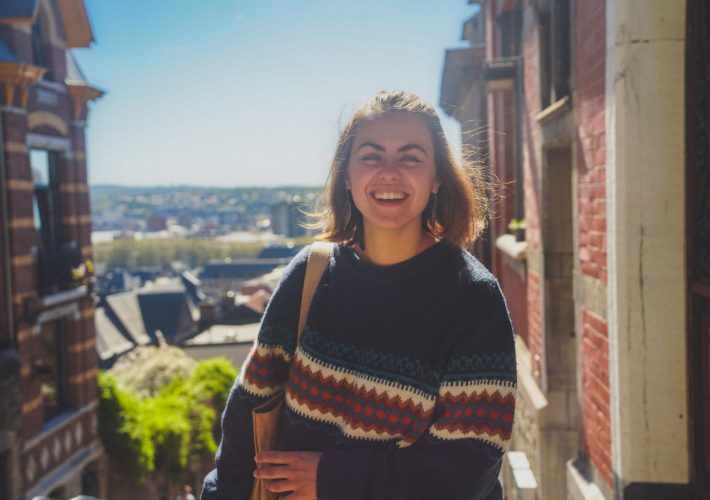


2 COMMENTS